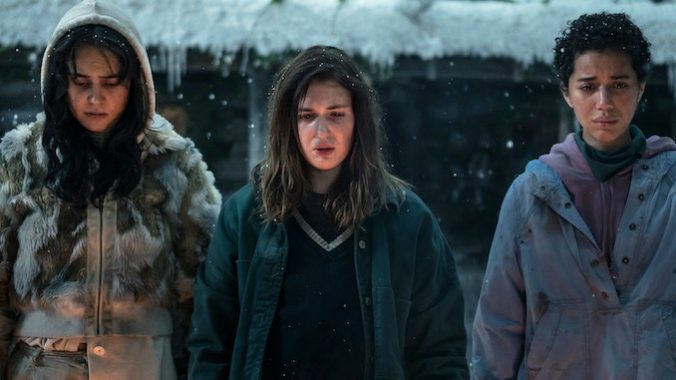Yellowjackets Season 2 Showrunner Jonathan Lisco Breaks Down Episode 2’s Backyard BBQ
Photo Courtesy of Showtime

[Spoilers below for Season 2 Episode 2 (“Edible Complex”) of Yellowjackets.]
“Are they really gonna do it?”
That’s been the million-dollar question percolating in viewer’s minds ever since the Yellowjackets pilot featured a young woman running for her life in the snow, then heavily implying she became a whole-ass meal for at least some of the survivors of the Yellowjackets 1996 championship girl’s soccer team.
Cannibalism. Not a topic often portrayed in most mainstream storytelling, but Yellowjackets became a cult hit for Showtime because it has always purposefully pursued non-traditional storylines, especially those centered on the complexities women navigate. In just the first season it covered everything from mean girls cliques to abortion, remorseless infidelity, murder and familial apathy. And yes, dangled that most taboo of topics: how people eat other people to stay alive.
Many expected series creators Ashley Lyle and Bart Nickerson and showrunner Jonathan Lisco to dance around actually committing to overtly portrayed cannibalism, but nope! They confronted it head on with a definitive answer in the second episode of Season 2, “Edible Complex.” And it was unfurled in the most darkly absurd way that likely no one, outside of the writers, could have imagined.
Intrigued with the creative decisions behind that series defining moment, Paste went right to Jonathan Lisco, the writer of “Edible Complex,” to get his perspective on how they set up the storylines and the characters to eventually get to that gruesome episode ending.
Note: The following interview has been lightly edited for length and clarity.

Paste Magazine: Jonathan, let’s start with some thematics for Yellowjackets. How would you define the arc of each season to date?
-

-

-

-

-

-

-

-

-

-

-

-

-

-

-

-

-

-

-

-

-

-

-

-

-

-

-

-

-

-

-

-

-

-

-

-

-

-

-

-








































